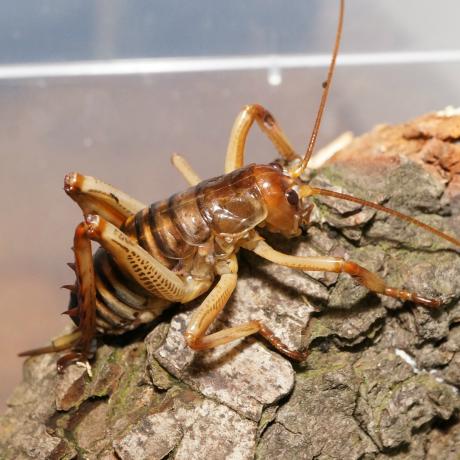

Wetas are nocturnal insects that feed on plant matter, chew bark and eat various insects. They can be found living in old tree trunks, rotting wood or under bark. They can reach an impressive size of up to 7cm.
Similar in appearance to giant crickets and reaching sizes of 7cm, Wetas are big insects. The abdomen of a Weta is striped with yellow and shades of brown. The long laying probe protruding from the back of the abdomen easily identifies a female. Both sexes have powerful jaws that are capable of giving a nasty nip, but the males have larger ones! The back legs have large sharp spike, so caution should be taken with these too.
Found in small groups consisting of one male and several female, the Wellington Tree Weta makes its home inside hollow tree trunks or rotting wood. They are native to New Zealand.
To house Tree Wetas, you need a strong tank, their jaws are very powerful. Provide a soil substrate and if possible a tree trunk or rotting branch which has a hole for them to enter. If this is not possible, the use of a paper tube tided to the side of the tank should be adequate, place rotting wood around it. Being a nocturnal species, room temperature should suit them. Lightly mist with water a few times a week.
Feeding Wetas is easy as in the wild they feed on a number of plant leaves. Provide willow, Plantain and a number of other species of tree foliage and see which they prefer. You can also feed them on apples, carrot, cherries and cabbage, they also like insects such as mealworms, locusts and small crickets. Unnatural foods consist of dog and cat biscuits, they will also eat other foods, so experiment and see what they like.